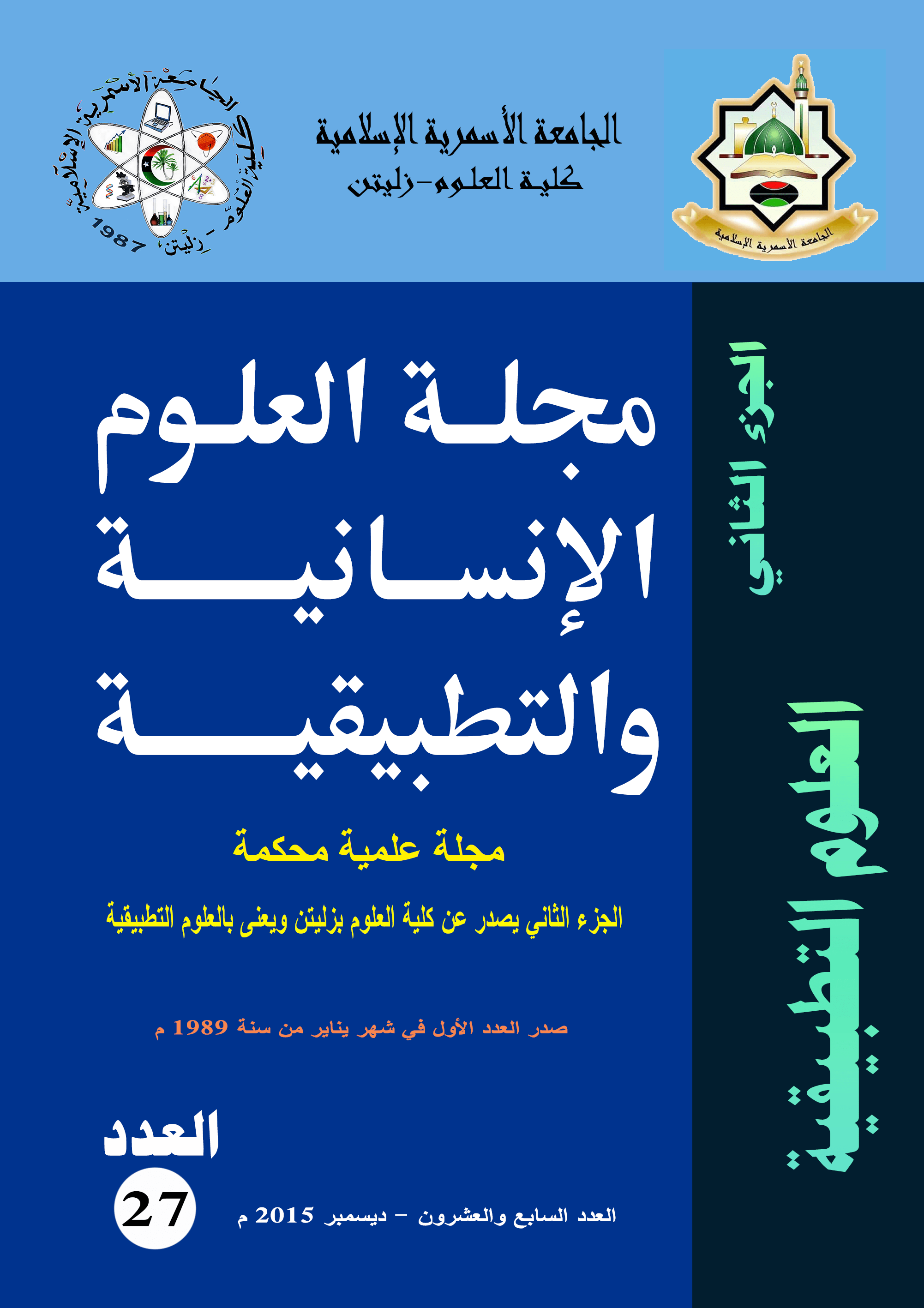EPIDEMIOLOGY OF SUPERFICIAL FUNGAL SKIN INFECTIONS IN PATIENTS ATTENDING ZLITEN TEACHING HOSPITAL
Keywords:
Epidemiology, superficial fungal infection, Dermatophytosis, Pityriasis versicolor, tinea capitisAbstract
Superficial fungal infection of skin and it´s appendages is common health problem worldwide. Dermatophytosis and Pityriasis versicolor are the main superficial fungal infections in humans. The risk factors are hot humid environment leading to excessive sweating, and contact with animals. 3303 patients of various skin complaints were examined at outpatient Department of Zliten Teaching Hospital over a period of 9 Months. Retrospective study was carried out to analyze the data to find out the distribution pattern of different clinical types in relation to age and sex. 161(4.9%) patient were found to be affected with superficial fungal infection. 22.9% of infected patients were less than 7 years old, followed by age group from 21-27 years(14.9%). Male to female ratio was 1.2:1. The most frequent clinical pattern were, Tinea capitis (25.5%), followed by Tinea pedis (22.4%), Tinea corporis (21.7%) and Pityriasis versicolor(18.6%). Tinea capitis where the most frequent superficial fungal infection before 14 years of age, and Pityriasis versicolor was the most frequent fungal infection in the age group 13-20 years.
References
Hay R.J., Ashbee H.R. Mycology. Burns T., Breathnach S., Cox N., Griffiths C. 2010.Rook´s Textbook of clinical dermatology. Wiley-Blackwell, PP: 36.1-36.92.
El-Ghameriny M.S. 2014. Cutaneous fungal infections. Ghameriny´s textbook of clinical dermatology; PP: 903-986.
Havlickova B., Czaika V., Friedric M. 2008. Epidemiological trends in skin mycoses worldwide. journal compilation. Blackwell publishing Ltd. Mycoses; 51: 2-15.
Marques S.A., Robles A.M., Tortorano A.M., Tuculet M.A., Negroni R., Mendes R.P. 2000. Mycoses associated with AIDS in the Third World. Med Mycol; 38 Suppl 1:269–279.
Andrews M.D., Burns M. 2008. Common tinea infections in children. American family physician; 77:1415-1420.
Kaur R, Panda P.S , Sardana K, Khan S. 2015. Mycological Pattern of Dermatomycoses in a Tertiary Care Hospital. Journal of Tropical Medicine; 1: 1-5.
Monthly Report on population number and statistics of Zliten Office for Civil Registration. Dec. 2015.
Ellabib M.S., Khalifa Z. M. 2001. Dermatophytes and other fungi associated with skin mycoses in Tripoli, Libya, Ann Saudi Med; 21:193-195.
Kocinaj A. F., Kotori M. G., Koraqi A, Fida M. 2015 Dermatomycosis frequency and localization sites. Med Arh. Feb; 69: 58-59.
Khorchani H., Haouet H., Amri M., Zanned I., Babba H., Azaiz R. 1996. Epidemiological and clinical profile of superficial mycoses in Monastir region (Tunisia). Arch Inst Pasteur Tunis;73:179-84.
Abd ElmegeedA. M., Ouf S.A., Moussa T. A.A., Eltahlawi S.M.R. 2015. Dermatophytes and other associated fungi in patients attending to some hospitals in Egypt. Brazilian journal of Microbiology; 3: 799-805
Murtaza M., Rajainthran S., George B.A. 2013. Mycological Study of Superficial Mycoses at the Skin Clinic in Sabah, Malaysia.International Journal of Pharmaceutical Science Invention; 2: 45-48
Sellami A., Sellami H., Makni F., Mezghani S., Cheikh-Rouhou F., Marrekchi S., Turki H., Ayadi A. 2008. Childhood dermatomycoses study in Sfax Hospital, Tunisia. Mycoses; 51: 451-454.
Downloads
Published
Issue
Section
License
Copyright (c) 2015 Journal of Basic Sciences

This work is licensed under a Creative Commons Attribution 4.0 International License.




